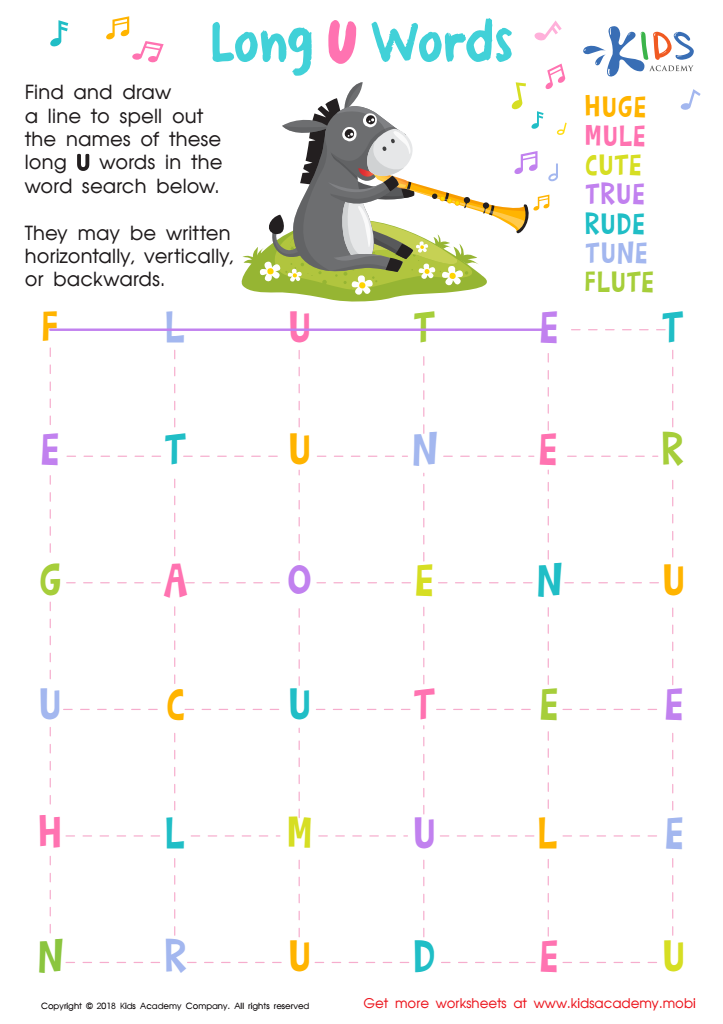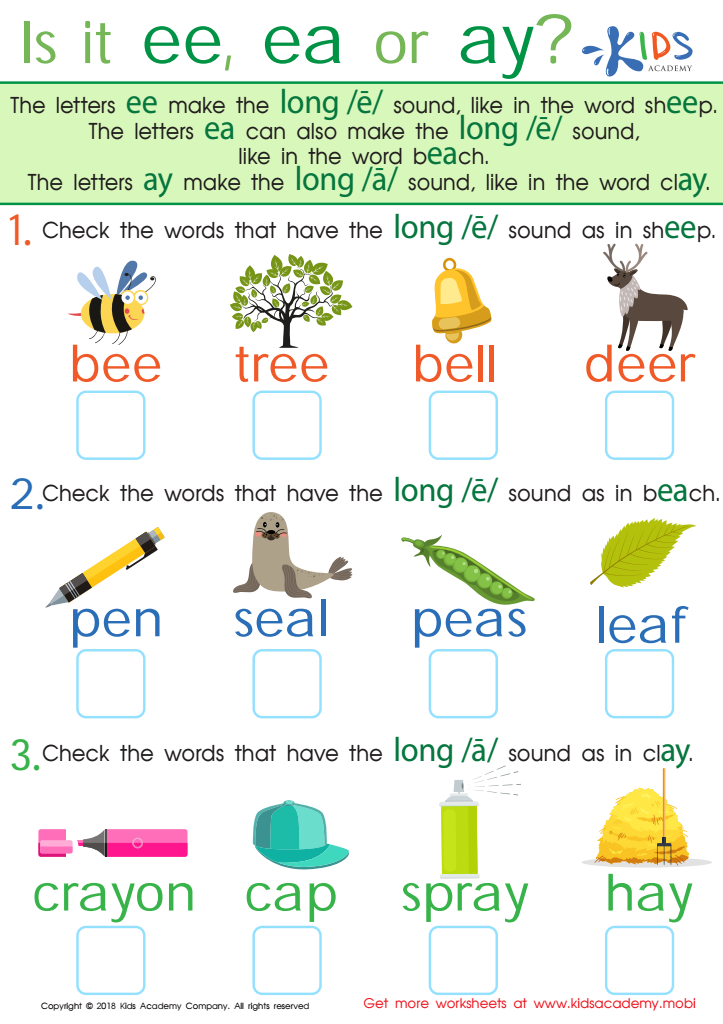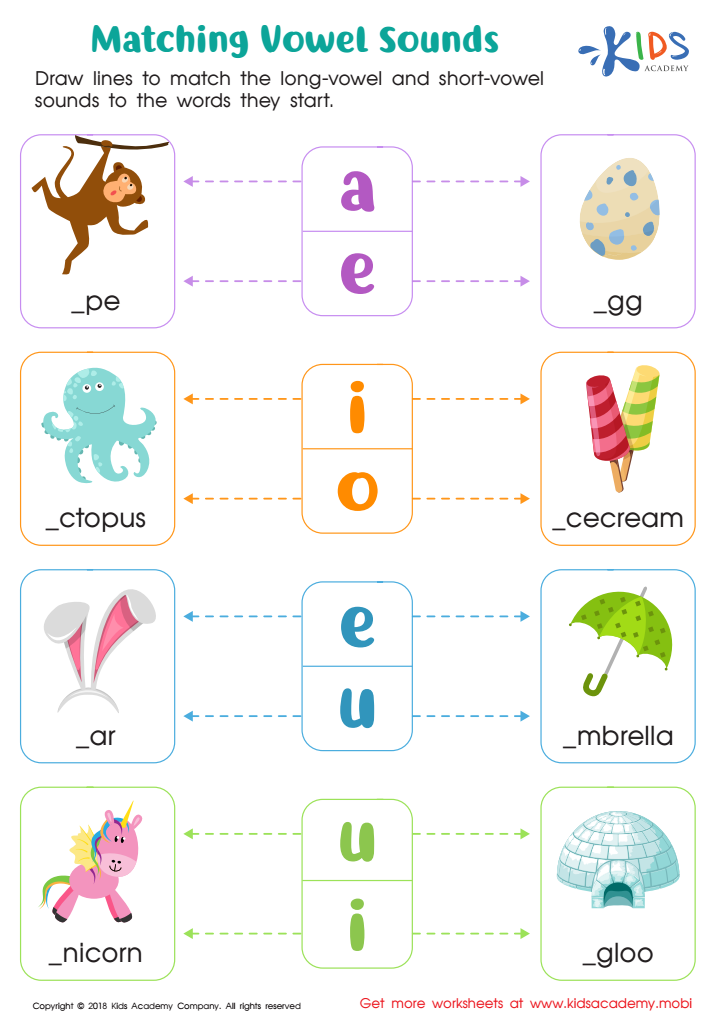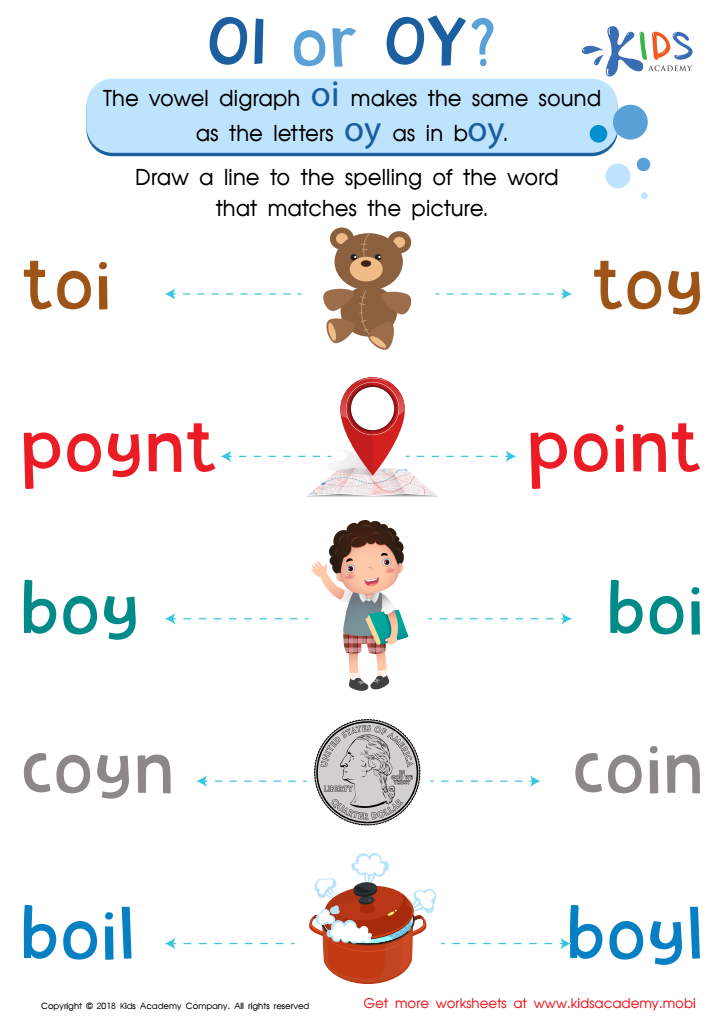Reading proficiency Normal Vowels Worksheets for Ages 6-9
5 filtered results
-
From - To
Enhance your child's reading skills with our engaging Normal Vowels Worksheets designed specifically for ages 6-9. These colorful, interactive worksheets focus on building reading proficiency through exciting activities centered around normal vowels. Young learners will explore vowels in various contexts, improving their recognition and pronunciation. With a mix of tracing, filling, and fun exercises, these resources provide essential practice that turns learning into a joyful experience. Perfect for home or classroom use, our worksheets support foundational literacy development, ensuring that your child gains confidence and competence in reading. Discover the joys of learning vowels and watch their reading skills flourish!


Long /u/ Words Worksheet


Is It EE, EA, or AY? Worksheet


Matching Vowel Sounds Worksheet


Long and Short U Worksheet


Reading: OI and OY Worksheet
Parents and teachers should prioritize reading proficiency in normal vowels for children aged 6-9 because this critical skill serves as a foundation for overall academic success. During these formative years, children cultivate their basic literacy skills, and understanding vowels plays a pivotal role in this process. Vowels—A, E, I, O, U—are integral to forming words, and a solid grasp of their sounds enhances decoding abilities, allowing children to tackle new words independently.
Proficiency in reading not only boosts comprehension but also fosters a love for literature and learning. When children feel confident in their reading skills, they are more likely to engage with texts, explore diverse genres, and delve into imaginative worlds. This engagement stimulates creativity and critical thinking.
Moreover, strong reading skills positively impact other subjects, as understanding written material is vital in mathematics, science, and social studies. Supporting children in their reading journey helps bridge educational gaps and sets them on a path to lifelong learning.
By focusing on normal vowel sounds and reading proficiency, parents and teachers empower children to become skilled communicators and informed citizens, contributing to their self-esteem and academic trajectory. Ultimately, nurturing these skills during ages 6-9 lays the groundwork for future success.

 Assign to My Students
Assign to My Students















